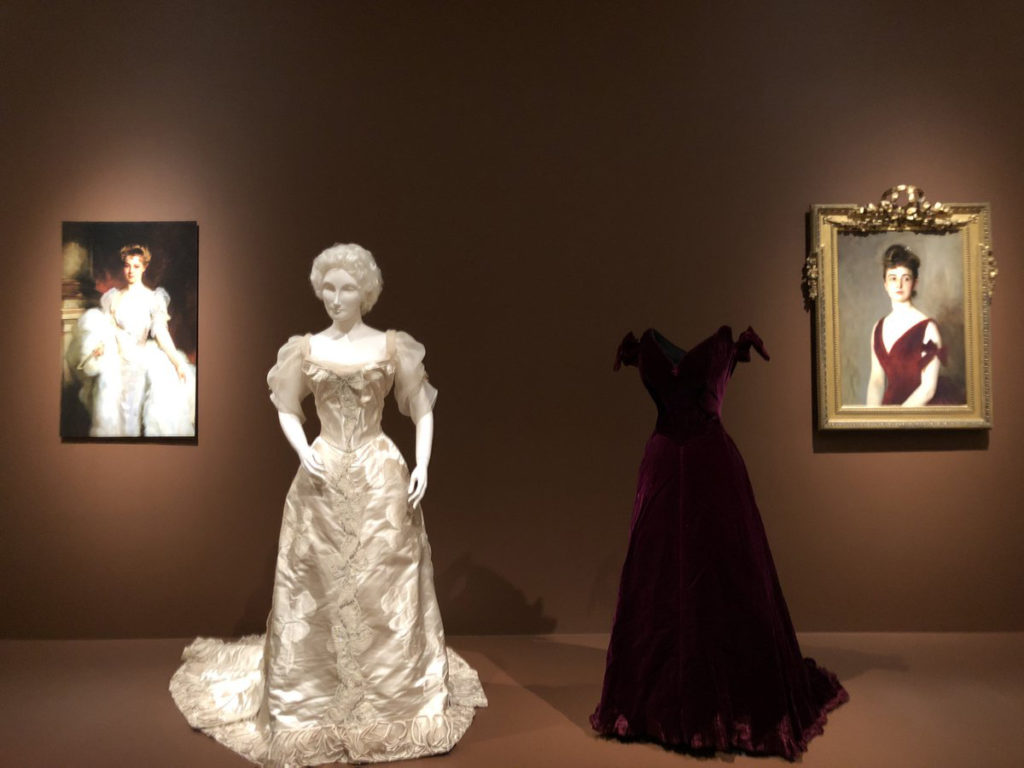
Fine Art Connoisseur July/August 2019, Editor’s Note:
Asking Your Audience
By Peter Trippi
Recently I was reminded that getting more brains on a problem is better than fewer. The Museum of Fine Arts, Boston has always been admired for the expertise of its curators, who have built up an especially strong track record in the paintings of John Singer Sargent (1856–1925).*
Knowledgeable as they are, curators Erica Hirshler (American paintings) and Pam Parmal (textiles and fashion arts) teamed up with the museum’s educators earlier this year to mount an intriguing display that shows how inclusivity can benefit everybody. On view at the MFA for seven months (it closed in late June), “Exhibition Lab: Sargent and Fashion” was devised in anticipation of a major show that will be on view at Tate Britain (London) in 2021 and then in Boston the following year. It seems odd that no previous exhibition has looked hard at the sumptuous clothing worn by the privileged people depicted in Sargent’s famous portraits. Now at last their stories will be told. This will be not only an explanation of “Who designed that gown?” but also “Why does the gown that Sargent painted look different from the actual gown?” and “Why would that person choose to wear that particular gown at all?”

In this one-room show’s introductory panel, the MFA posited that laboratories are “where experiments take place — where ideas are tested and discoveries are made.” It also noted rightly that creating a museum exhibition requires “years of exploring concepts, trying on new ways of seeing and thinking, and asking many, many questions.”
In a brief video looping on a small screen, examples of specific paintings and costumes were discussed by Hirshler and Parmal; watching them allowed visitors to “put a face” on the museum’s experts, who traditionally have remained comparatively invisible to the general public.
Instead of just assuming what visitors might think, the Lab presented three sections, each focused on a single idea. The most interesting — for me at least — had to do with exoticism: in Sargent’s day, it was common for rich white people to dress up in costumes derived from foreign cultures such as Turkey, Japan, or China. They saw no problem with this, but might such images now offend or bewilder viewers who grew up in those cultures? It’s a valid question that visitors were invited to address by completing a comment card or taking a survey on an iPad. Occasionally a staff member was on hand to conduct a survey, interview, or focus group. Now that the Lab has closed, the curators are busy sifting through the responses, and will surely take them into account as they finalize the exhibition.
Extending an invitation to the public to speak up is smart, as long as experts never cede control of the process, or their ultimate findings. In our big-mouthed, crowd-sourced era, museums are struggling to balance the demands of younger digital-minded audiences — who long to “like” or “unlike” almost everything in life — with the deep expertise their staffs have developed through decades of looking and researching. The MFA has offered an intriguing method to explore, and we certainly look forward to enjoying the actual Sargent and Fashion exhibition when it finally opens there in 2022.
In the meantime, this Lab approach may be useful to other entities in our art world, including galleries, artists’ co-ops, and even teaching institutions. Let’s see what happens.
 Download the July/August 2019 issue here, or subscribe to Fine Art Connoisseur today so you never miss an issue.
Download the July/August 2019 issue here, or subscribe to Fine Art Connoisseur today so you never miss an issue.
Sign up to receive Fine Art Today, the free weekly e-newsletter from
Fine Art Connoisseur magazine.








I think your assumption is that wealthy people were appropriating culture by dressing like these different cultures but I would argue that it is showing respect to different styles of dress. We don’t accuse other cultures of something wrong when they would dress in Western European styles. It’s just clothing which is an art form itself and has always been respected as such.